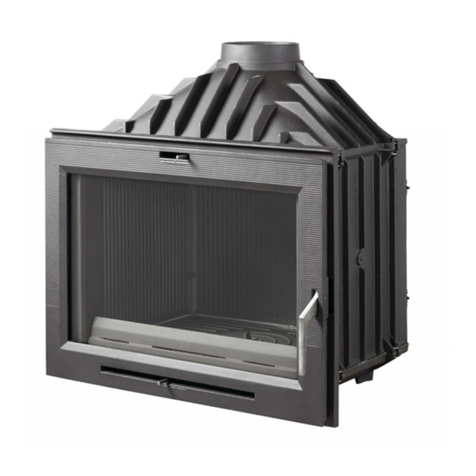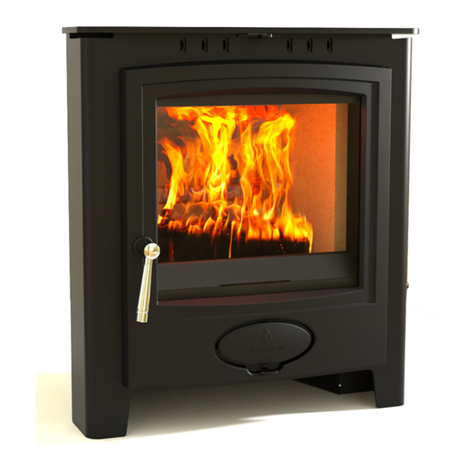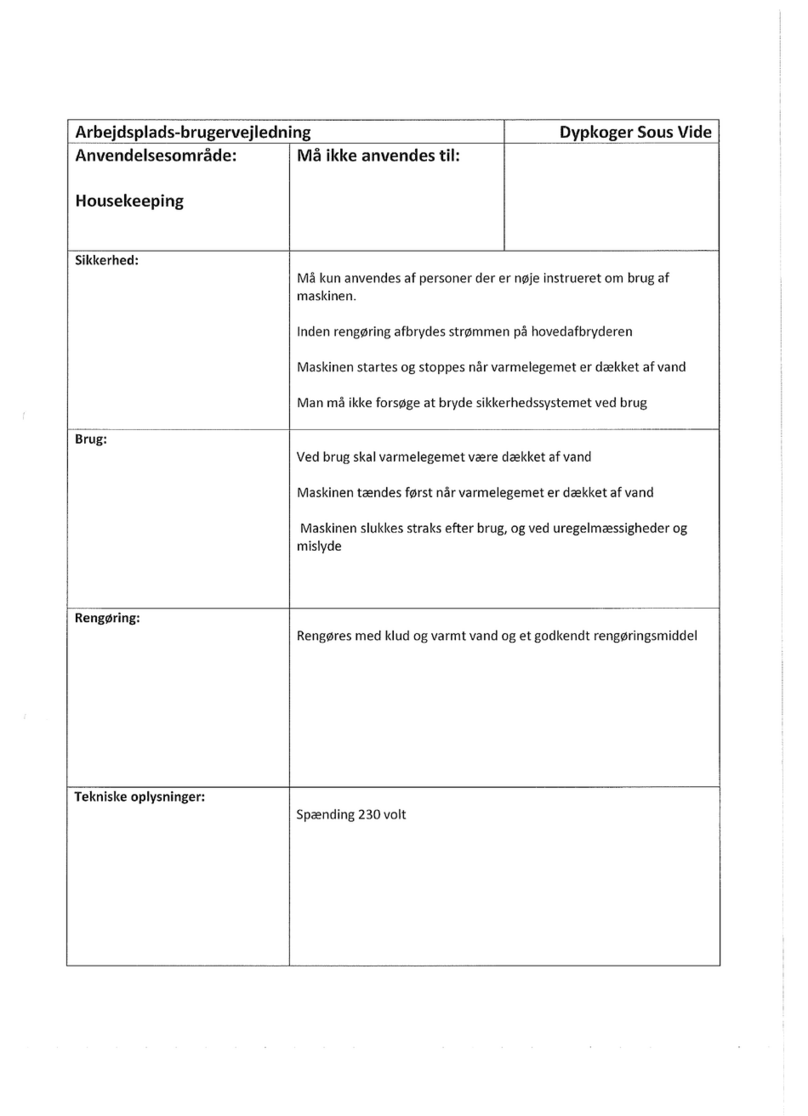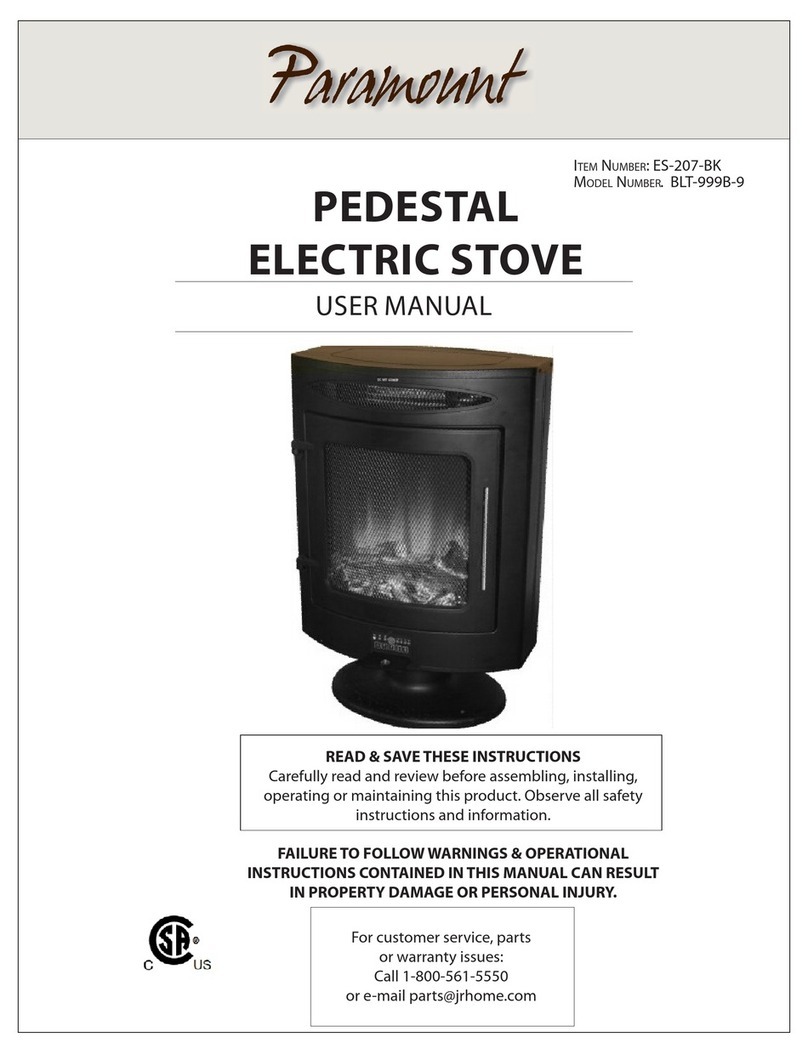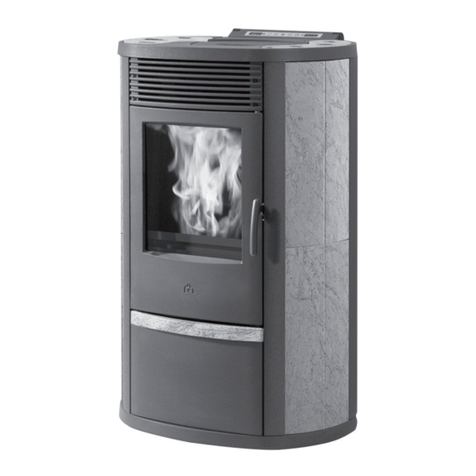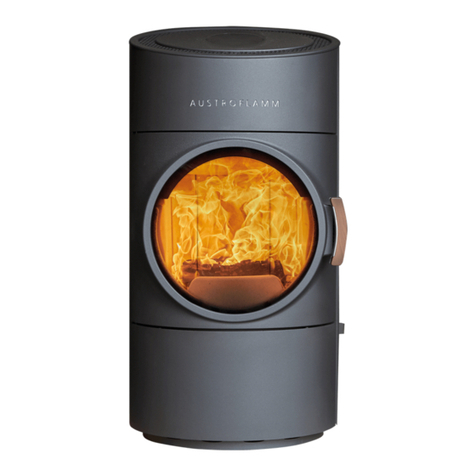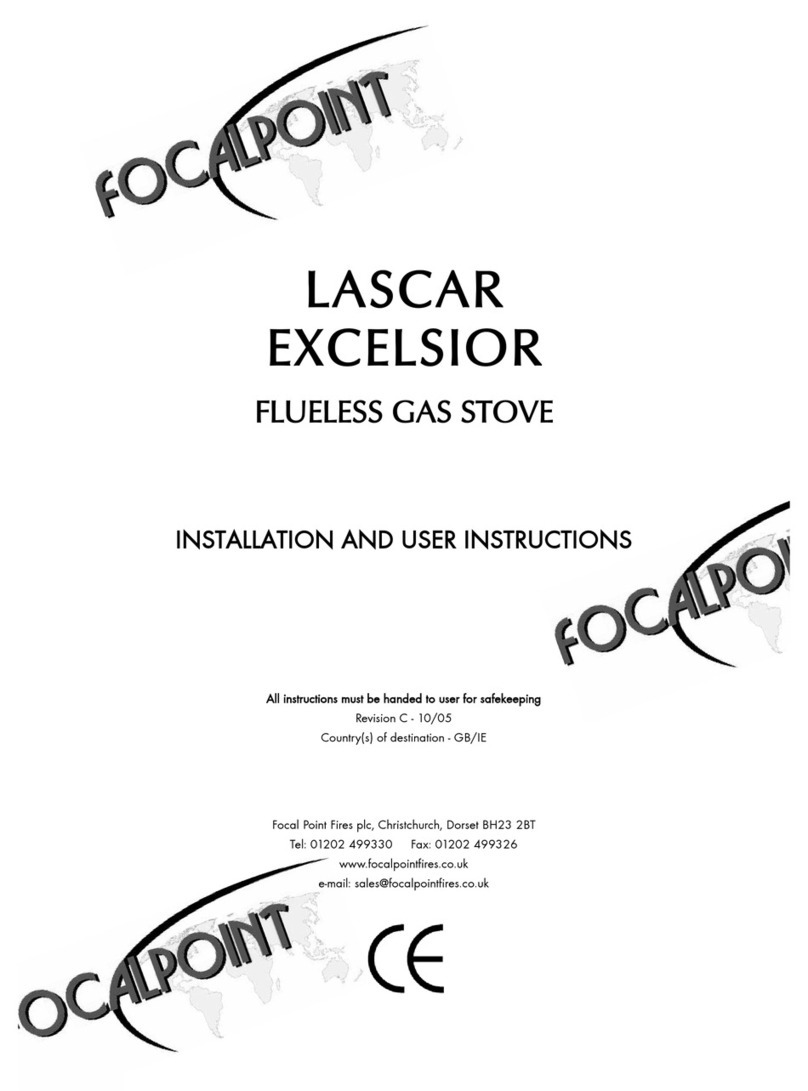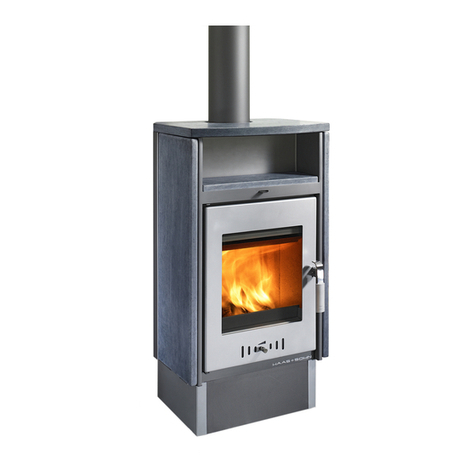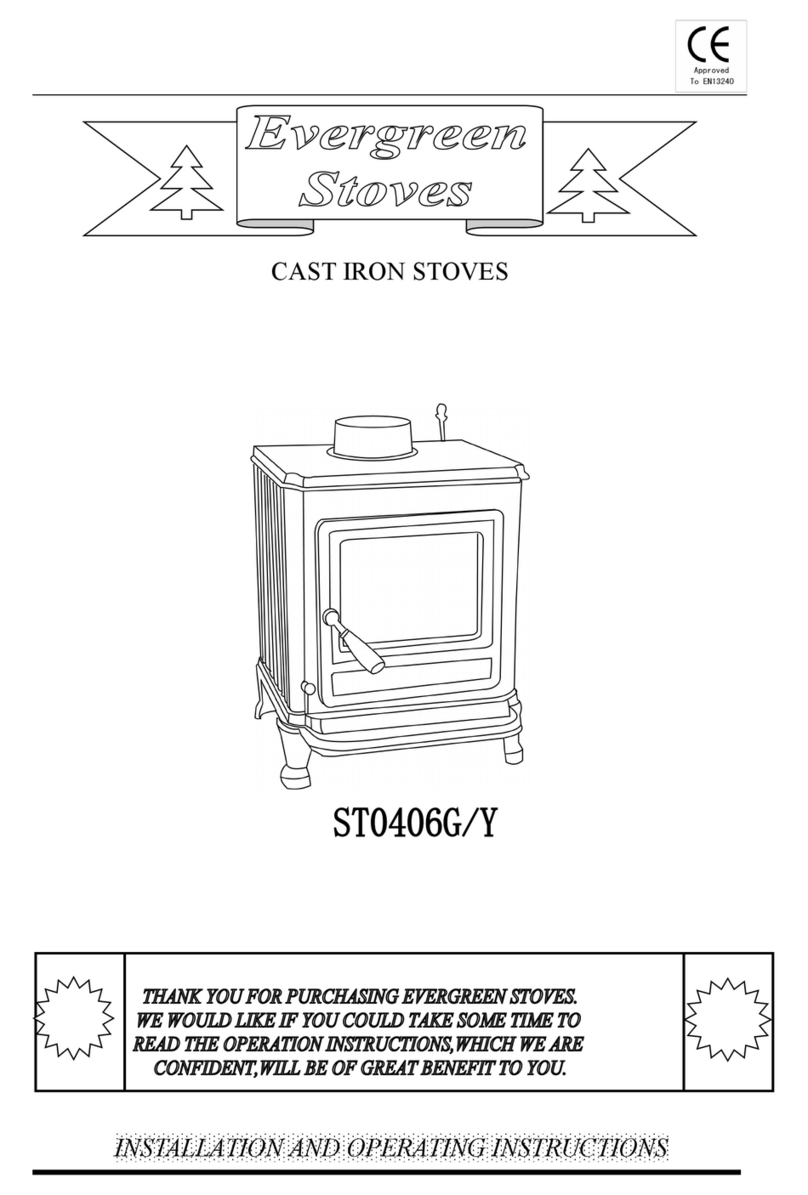
4
LIGHTING
1) Before lighting the stove, Please ensure that any build-up in the firebox has been
removed and that the ashpan has been emptied.
2) Open the primary air and secondary air of the stove.
3) Lay firelighters or paper on the grate and then kindling wood with a small quantity of
fuel.
4) Ignite and close the door.
5) When the fire is well established, Subsequently , the primary air is closed partially and
the burning of the stove will be driven over the secondary air.
Do not leave the stove unattended during this phase.
RE-FUELLING
Do not let the fire diminish too far before refueling. First, riddle the grate. Then open the
primary air supply, open the door and gradually add fuel (taking care not to fill above the
front fire bar) until a bright fire is achieved. When the door is closed adjust the primary air
(spin wheels) accordingly.
(The fire in the burning chamber remain glowing carbon without any flame. Opening the
door, and add fuel to fire, taking care not to overfill higher than the front firebars. Close the
fire door and re-set spin wheel to required setting. )
ClEANINGAND EXAMINATION
The stove, the flue gas ways and the flue pipe should be examined and cleaned every year,
especially when burning wood and coal. This must be done by a competent chimney sweep.
This expert will give you some information about the necessary intervals.
The stove should be checked by an expert every year.
PRESCRIPTION
1) Stove without self-closing door must unconditionally operate with closed burning
chamber, except when igniting, add fuel and remove the ash. Otherwise it can cause the
danger of other, e.g. at the chimney connected, fire sites and a slowing down of flue gases.
2) Stove without self-closing door with glass, has to be connected to a separate chimney.
You can only use an open burning chamber under supervision. The chimney calculation is
proved by DIN 4705.
COMBUSTION AIR
Because stoves depend on fire places, that take their combustion air out of the room where
they are installed, you have to provide for sufficient combustion air.
When all windows and doors are sealed (for example in connection with energy savings
measures) , it is possible that the fresh air supply is no longer guaranteed, which means that
the draught requirement of the stove can be impaired. It is a legal and safety requirement
that a permanently open vent to an outside is installed in the room to provide a fresh air
feed. This is also a preventative against carbon monoxide poisoning and required for all
solid fuel and gas appliances.
Extractor hoods, which are installed together with fire places in the same room or with











